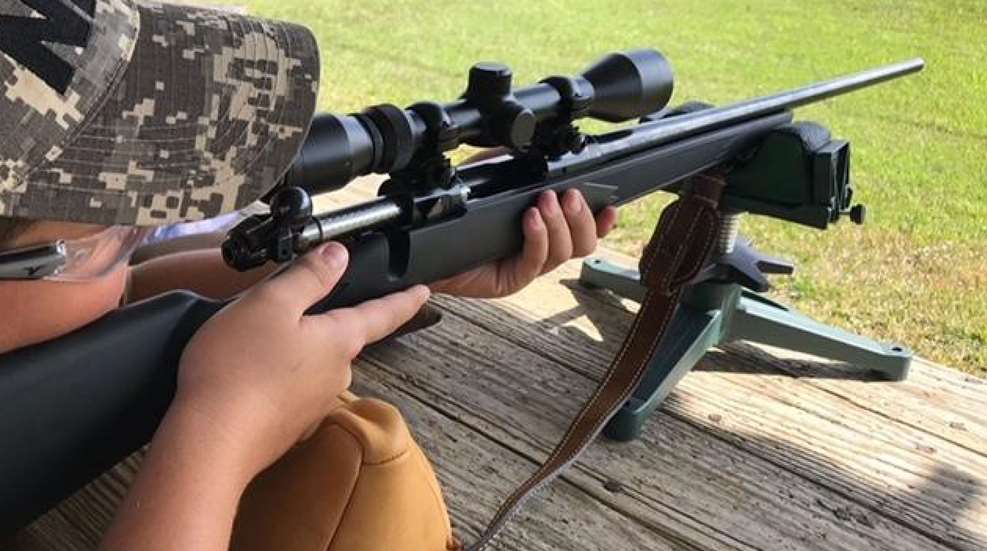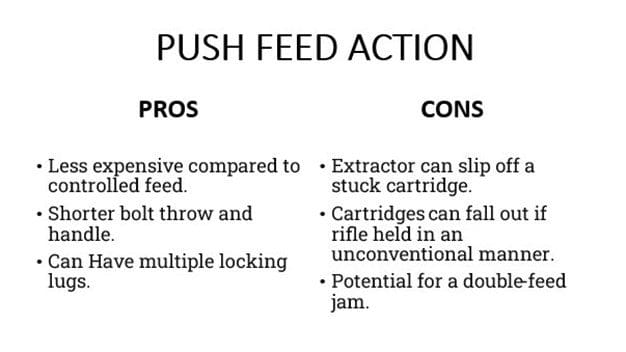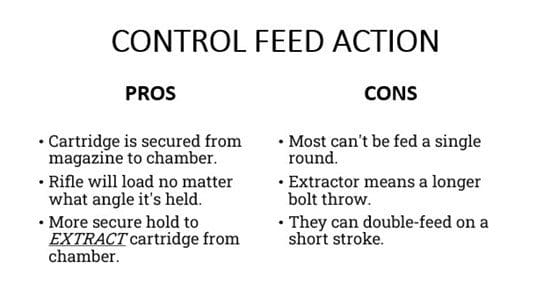Know Your Rifle Bolt
Tags:
Become a knowledgeable gun owner by understanding the various types of bolt-action guns.

Know Your Rifle Bolt – NRA Women.com
There are three main components of any rifle or shotgun: the action, stock and barrel. The action is what loads, fires, and unloads or “ejects†the cartridge or shotshell. The heart of the action is the bolt. It is the bolt that contains all the components that makes loading, firing and unloading possible. Thus, all rifleman or woman should become familiar with bolt terminology, the types of bolts, and the type of feeding their bolt uses to load and unload their firearm.
Bolt Terminology
Bolt Body. The bolt body is the main component of the rifle bolt. The bolt body encompasses the parts such as the firing pin and extractor that allows for the firing of the cartridge and removal of the spent casing.
Bolt Handle. The bolt handle extends outward from the bolt body and outside of the firearm receiver. Depending on the type of bolt, the handle is gripped and manually moved forward and rearward. The bolt handle is used to cycle cartridges through the action.
Bolt Head. The bolt head is the forward part of the rifle bolt. The bolt head is where the locking lugs are located. The bolt head contains the bolt face and the locking lug(s).
Bolt Lug(s). The bolt lug(s) are what locks into the rear of the barrel to ensure a tight seal. It also prevents the bolt from shooting rearward when the cartridge detonates. Without locking lugs, when a cartridge is fired, damage to the gun and/or serious bodily injury or death to the shooter could occur.
Bolt Face. The bolt face serves as the rear wall of the chamber. This is also where the firing pin exits to strike the primer of the cartridge. Most bolt faces are recessed, so that when the action is closed creates a tight seal to prevent gases from escaping.
Bolt Extractor. The bolt extractor grips the cartridge’s extractor groove and pulls the cartridge, either spent or live, from the chamber. When the bolt is pulled to furthest rearward travel, the cartridge or case is removed from the firearm through the breech.
Bolt Shroud. The bolt shroud is the cover on the rear of the bolt. Depending on the bolt, the shroud can house the firearm’s safety.
Bolt Carrier. Bolt carriers are a component of semi-automatic rifles. It is the component that the bolt moves back and forth in to load, fire, and eject the cartridge or cartridge case.
Types of Bolts
Rotating Bolt
The most common bolt action is the rotating bolt. The bolt is operated by rotating the bolt handle upward, unlocking the locking lugs, and pulling to the rear. When the bolt is pushed forward, it picks a cartridge out of the magazine and feeds it into the chamber of the firearm. Once the cartridge is pushed into the chamber, the bolt handle is rotated down to lock the lugs in place.
The rotating bolt was designed by Johann Nicolas von Dreyse in 1836. He developed the Dreyse Needle Gun, which used the bolt handle to lock the bolt in place. Locking lugs on the bolt head was first used in 1886 on the bolt of the Lebel Model 1886 Rifle. The rotating bolt is used on most modern high-caliber rifles in today’s market.

Straight Pull Bolt
The straight-pull bolt is commonly referred to as a sliding bolt. Compared to rotating bolts, straight-pull bolts are very fast to operate. A rotating bolt requires four movements to operate the action (rotate upward, pull back, push forward, and rotate down to lock), whereas the straight-pull bolt only takes two movements—pull rearward and push forward. These two movements cycle the action to load, fire and eject the cartridge or cartridge case.
The straight-pull bolt-action is operated by pulling back on the bolt, which disengages the bolt, and then pushing the bolt forward, which locks the bolt head in place. Some designs include a rotating bolt head that locks and unlocks as it travels through the receiver. The bolt “knows†when to release and when to hold by position of the bolt handle.
The most well-known historic straight-pull rifles include rifles such as Lee Rifle Model 1895, Mannlicher M1895 and the Mannlicher M1888. Because of the speed of operation, straight pull bolts are making a comeback.
Tilting Bolt
The tilting bolt was found in early semi-automatic rifles. Many of these had military applications. This type of action became relatively common after World War II. Many of the firearms that utilize tilting bolts have been replaced with stronger rotating bolts. Tilting bolts were most known in rifles such as the FN Model 1949, FN FAL Select Fire Rifle, and the SKS Semi-automatic Carbine Rifle.
Tilting bolts were operated by the spent gases from the previous cartridge being directed to the bolt by a gas piston and gas ports. When fired, the bolt moves rearward and drops into a recess in the receiver, tilting the rear of the bolt upward. As the tilting bolt moves forward, it picks a round out of the magazine and moves it towards the chamber. When the cartridge is seated in the chamber, the head of the bolt raises and locks into place. The rearward and tilting up of the bolt reduces the pressure of the spent round to safe levels.
Types of Feeding
Push Feed Bolts
Push-feed bolts are the most common type of feeding systems. Compared to the control feed bolts, it is less expensive to manufacture. Push-feed bolts push the cartridge from the magazine into the chamber. Once the cartridge is seated in the chamber, a small spring extractor grips the case in the extractor groove at the head. The push feed bolt has a shorter throw than the control feed bolt.


Control Feed Bolts
Control-feed bolts are the strongest of the bolts. This bolt has a large claw that extends from the bolt head to the bolt shroud. The extractor of the control feed bolt grips the cartridge by the extractor groove and firmly holds the case as it is slid into the chamber. The control feed bolt is always in contact with the cartridge. Firearms with a control feed bolt must be loaded from the magazine, unlike push feed bolts.
It is the responsibility of every gun owner to be educated and know their equipment and the proper terminology of their firearm. The bolt is part of the action. Without it, the firearm is just a paperweight. To become a knowledgeable gun owner, know your bolt, the names of the components and the various types.
